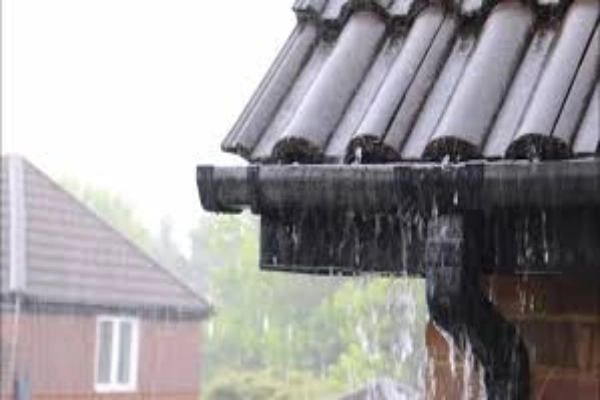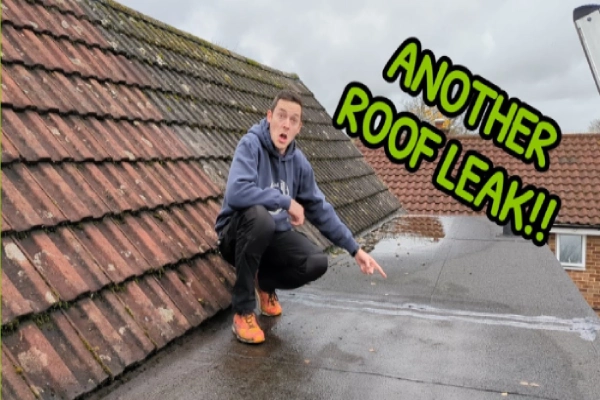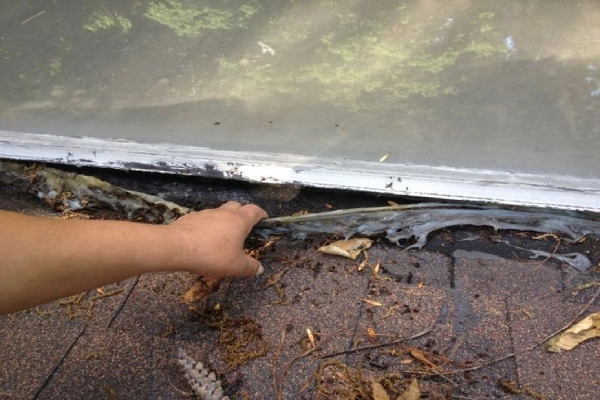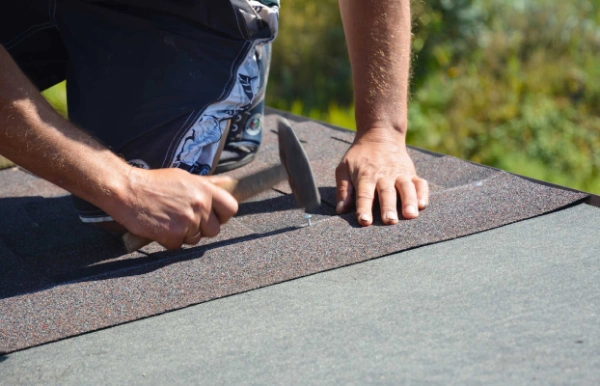One of the biggest problems that happen during heavy rain is roof leaks. Roof leaks in heavy rain can be a big challenge if you do not repair it quickly. If you’ve ever noticed your roof only leaks when it rains heavily, understanding the reasons behind it is very important for fixing the problem as soon as possible. In this article, we will explore the common causes of roof leaks during heavy rain and what you can do to prevent them. Continue reading.
Signs and Causes of Water Damage
Signs of water damage and roof leaks during heavy rain include discoloration on walls or ceilings, damp spots, peeling paint, and a musty smell. These causes often stem from roof leaks, broken pipes, clogged gutters, or faulty windows. When water comes in, it can weaken structural materials that lead to mold growth, wood rot, and other serious issues. Identifying these signs early and fixing the source of water can help you to prevent expensive and costly damage in the future.
8 Reasons Why Your Roof Leaks During Heavy Rain
There are many reasons for roof leaks in heavy rain which include:
- Damaged or Missing Shingles
Shingles are the first line of defense against rain, and if they are damaged or missing, water can easily seep through the building. Over time, weather conditions, strong winds, or debris buildup can cause shingles to lift or break. When this happens, rainwater finds its way inside.
- Clogged Gutters
Gutters play an important role in directing rainwater away from your roof. When gutters are clogged with leaves, twigs, or other debris, the water can’t flow properly. This problem can lead to water pooling on the roof and finally, it will seep into the interior of your home from every simple track.
- Improper Roof Slope
Another reason that roof leaks in heavy rain is unsuitable roof slopes. If your roof isn’t sloped properly, rainwater can be gathered in certain areas rather than draining off. This motionless water can find its way into small cracks or gaps in the roofing materials and cause leaks.
- Damaged Flashing
Flashing is a thin material that is used to prevent water from entering where the roof meets walls, chimneys, or vents. If your flashing is rusted, bent, or wrongly installed, rainwater can easily leak through these spots and you will face water leak.
- Cracked or Weakened Sealant
The sealant around vents, skylights, and chimneys can worsen and break over time because of their presence near other things. In the situation that the sealant cracks or wears away, water can seep through the cracks and into your home during heavy rain.
- Old Roofing Materials
Another reason that roof leaks during heavy rain is that as roofing materials get old and damaged, they lose their effectiveness in keeping out water. For example, old or worn-out shingles, tiles, or roofing felt can begin to absorb moisture. So the collected water can enter the building from every simple track.
- Roof Valleys
Roof valleys are the areas where two slopes connect to each other. These valleys are good places for water gathering and leaking in the case that they are not properly sealed. Poorly installed or deteriorating valley flashing allows water to seep into the roof structure.
- Poor Roof Installation
If your roof is improperly installed, it will not have enough protection against rain. For example, poor shingles, incorrect flashing installation, or unsuitable sealing around roof penetrations can cause roof leaks during heavy rain.
During heavy rain, roof leaks can cause discoloration, damp spots, peeling paint, and a musty smell. Causes include damaged or missing shingles, clogged gutters, improper roof slopes, damaged flashing, cracked or weakened sealant, old roofing materials, roof valleys, and improper roof installation.
How to Prevent Roof Leaks
Now you may want to know about the activities that you can do to prevent roof leaks during heavy rain. If your roof only leaks in heavy rain, you should do regular activities to maintain every aspect in the best status. You can start by checking your roof for any visible damage, including cracked shingles, gaps in the flashing, or missing sealant. The other work that you can do is cleaning out gutters regularly which will let that water flow freely. By doing it, you can reduce the risk of backup.
For a more detailed inspection, it’s a good idea to have a professional roofer to assess the overall condition of your roof. They can identify any areas that need repairs and provide solutions to prevent leaks from happening in the future.
What to Do if You Have Water Damage from a Roof Leak
If your roof has already leaked and caused water damage to your home, it’s important to act quickly. Water damage can lead to mold growth, weakened structural integrity, and costly repairs if you do not do anything about it. To stop a roof leak during rain, you can start by checking the roof for damage, like missing shingles or cracks in the flashing. If you find any even simple sign of a water leak, cover the area with a waterproof tarp to prevent more water from coming into your building. Then place a bucket under the leak to catch the water that drops inside the house. After the rain stops, call a professional to fix the roof properly. Temporary fixes won’t last for a long time, so it’s important to get it repaired as soon as possible.
Where Can We Get Help After Water Damage from Roof Leak?
If you see any signs of roof leaks in heavy rain or water damage from a roof leak, the first step is to stop the source of the water if it is possible. After that, water restoration services can help with the cleanup. These service normally start by assessing the damage, then removing standing water and drying out the affected areas. They also focus on preventing mold growth and repairing any structural damage. Finally, they restore your home to its original condition. They will investigate everywhere carefully to make you sure that the damages are treated. So, in the case of facing water damage, the best work is to look for professional water damage restoration companies nearby. For residents in North Vancouver, leveraging local expertise is key. That’s why many turn to specialized providers under the banner of Water Damage Restoration North Vancouver. These professionals not only follow the above steps meticulously but also understand the unique challenges of the local environment, ensuring that your property receives the most effective and tailored restoration service.
To prevent roof leaks during heavy rain, check for visible damage and clean gutters regularly. Have a professional roofer assess the roof’s condition for repairs. If leaks cause water damage, act quickly to prevent mold growth and costly repairs. Stop the water source, call a professional, and seek water restoration services to assess, remove standing water, dry affected areas, prevent mold growth, and restore the home to its original condition.
Conclusion
In this article, we investigated that roof leaks in heavy rain can happen for several reasons, like broken shingles, blocked gutters, or poor installation. Understanding these causes and taking steps to care for your roof can prevent future problems. If you face water damage, it’s a good idea to contact a water damage restoration company. They can fix the damage and stop things from getting worse. Acting quickly will save you from bigger issues down the road.
Fast and Reliable Water Damage Restoration with Revive Restoration
If water damage has affected your home, Revive Restoration offers professional services to handle the cleanup and repairs. Our team will quickly remove water, dry out the space, and be sure that mold doesn’t become another problem for your building and structure. Contact us today to restore your home and avoid further damage. If you need more information about other services, visit our website for more details and to schedule a service.






